HOME >> SCI-TECH
Tomb of Tang emperor's 'right-hand woman' discovered
Source:Globaltimes.cn Published: 2013-9-12 17:16:00
| Latest News |
Tomb of Empress Wu's secretary discovered
The tomb of Shangguan Wan'er (664–710), an influential female politician and poet during the regime of Empress Wu Zetian (690-705), was found in Xianyang, Shaanxi Province, according to the provincial cultural relics bureau on September 9.
| Details |
| When | The tomb was found in August, 2013 |
| Where | Near the Xi'an Xianyang International Airport, Xianyang, Shaanxi Province |
| Who | The tomb was found by Shaanxi Provincial Institute of Archaeology |
| What's inside | The tomb was badly damaged, and only a few burial accessories were found. |
| Where is the body? |
Though badly damaged, archaeologists have concluded that the tomb was built for Shangguan Wan'er, but have yet to locate her remains, posing the question: “Where is the body?”
Experts say the destruction of the Shangguan tomb may have been sanctioned by an emperor as punishment for a crime committed by her family years later.
Another theory points to Wen Tao, a warlord during the Five Dynasties Period (907-960), who is known to have looted a large number of imperial tombs built during the Tang Dynasty (618-907).
However, some Net users speculate that perhaps Shangguan was never buried there, or her body was removed by Tang Dynasty Emperor Xuanzong, who maybe a great admirer of her talents.
| Photo Gallery |
| Background |
Shangguan Wan'er (664–710) is widely recognized as one of the most talented women in Chinese history. A poet, writer and politician of the Tang Dynasty (618-907), Shangguan Wan'er was also an imperial concubine to Emperor Zhongzong.
Shangguan's grandfather and father were both important officials, yet both were killed because of her grandfather's opposition to Wu Zetian's power grab. Shangguan herself was demoted to slave along with her mother, but later she won the empress' appreciation for her talents in poetry and management of state affairs, and served as a secretary for the empress. In 710, she was put to death for involvement in a coup plot.
Source: Agencies
| TV Series and Books |
| TV Series | |
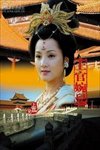 |
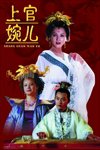 |
| Shangguan Wan'er(1998) | Shangguan Wan'er(2000) |
| Books | |
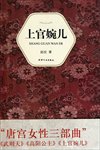 |
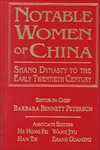 |
|
Shang Guan Wan Er (2010)
Author: Zhao Mei Shangguan Waner, a woman has the similar history with Wu Zetian (Chinese emperor). All her families are killed by Wu Zetian since she was a baby but, everything she own has close relation with Wu Zetian, as well as the three princes. |
Notable Women of China
Edited by Barbara Bennett Peterson Shangguan Wan'er(664-710), a Tang Dynasty poet and court official, was one of the most talented and colorful women in China's history. |
| As a Poet |
|
彩书怨
叶下洞庭初,思君万里余。
露浓香被冷,月落锦屏虚。
欲奏江南曲,贪封蓟北书。
书中无别意,惟怅久离居。 |
Reproach in a Letter on Colored Paper
When first leaves fall on Lake Dongting,
I long for you, thousands of miles away.
In heavy dew my scented quilt feels cold,
At moonset, brocade screen deserted.
I would play a Southland melody
And crave to seal a letter to Jibei.
The letter has no other message but
This misery in living long apart. |
|
驾幸新丰温泉宫献诗三首·其一
三冬季月景龙年,万乘观风出灞川。
遥看电跃龙为马,回瞩霜原玉作田。 |
Three Poems Presented to His Majesty
on Visiting Xinfeng and Warmsprings Palace (I)
The very last of winter’s three months,
in the years of the Jinglong Reign,
The Prince of Hosts left the River Ba
to view the ways of his land.
I see in the distance lightning leap,
dragons are his steeds;
I turn and spy the frosty plain
whose fields are all of jade. |
|
驾幸新丰温泉宫献诗三首·其二
鸾旂掣曳拂空回,羽骑骖驔蹑景来。
隐隐骊山云外耸,迢迢御帐日边开。 |
Three Poems Presented to His Majesty
on Visiting Xinfeng and Warmsprings Palace (II)
Wind-rattled phoenix pennons
turn brushing through the sky,
Shaggy-hoofed steeds of the horse guard
come stamping beams of light1
Mount Li lies sunk in shadow,
jutting beyond the clouds,
While far in the distance the royal tent
opens beside the sun.
1. This image plays on the name of one of the First Emperor Qin Shihuang’s famous horses, “Light-Stamper.” 2. This describes the imperial guard surrounding the emperor, the embodiment of the sun. |
Source:
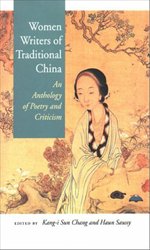 |
Women Writers of Traditional China -An Anthology of Poetry and Criticism Edited by Kang-i Sun Chang and Haun Saussy This anthology of Chinese women’s poetry in translation brings together representative selections from the work of some 130 poets from the Han dynasty to the early 20th century. |
| News Vocab |
墓葬 mùzàng
“墓” n. grave; tomb(Source: 《新世纪汉英大词典》)
“葬” v. bury; entomb(Source: 《新世纪汉英大词典》)
“墓葬” n. grave(Source: 《新世纪汉英大词典》)
Example:
专家认为,上官婉儿的墓葬级别大致与她生前的身份地位相符。 (Source: 《重庆晨报》)
Experts believe the appearance of Shangguan Wan'er’s grave is consistent with her social status.
Posted in: